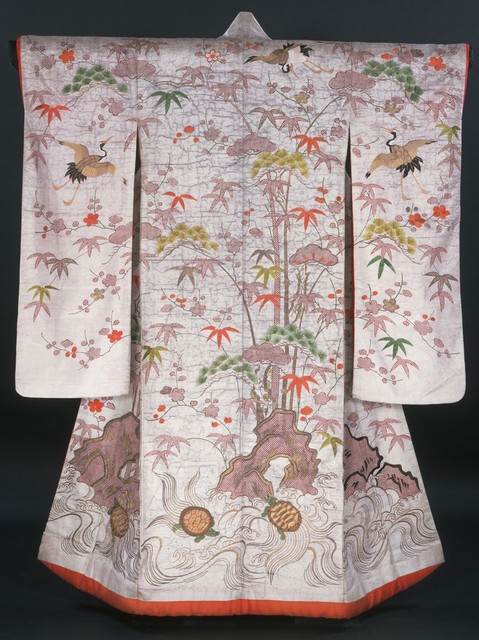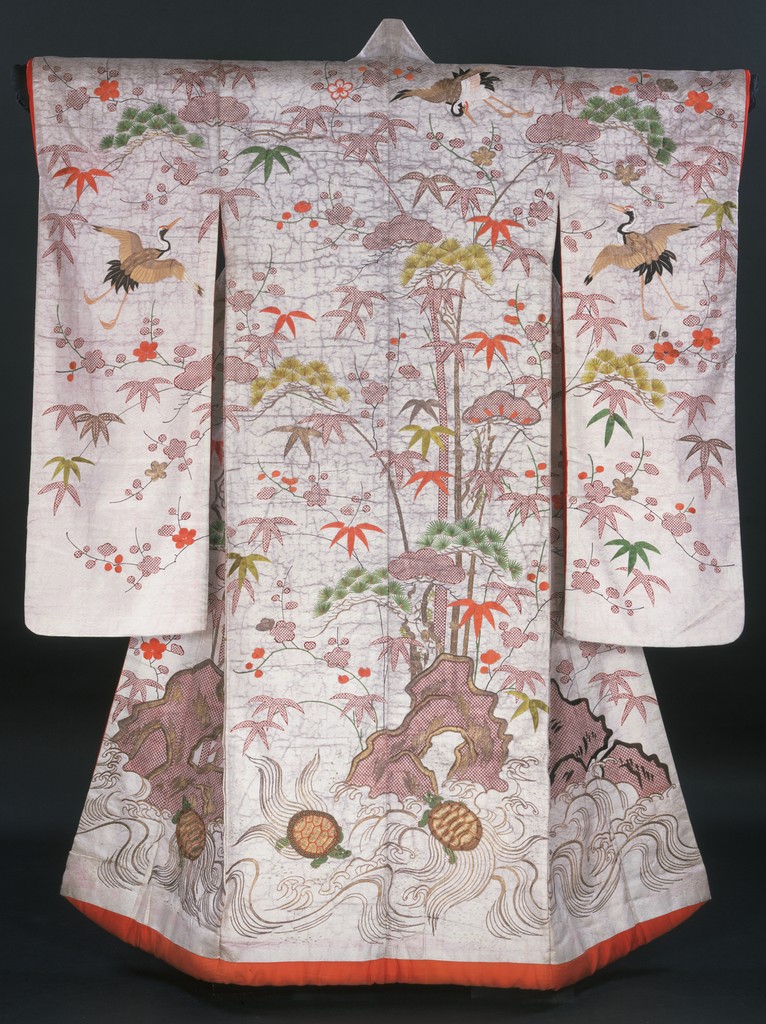Kimono (Uchikake), artist unknown

Full description
Kimono (Uchikake), artist unknown, first half of 19th C, Silk figured satin weave (rinzu) with stenciled imitation tie-dyeing; resist dyeing; and silk and gilt thread embroidery; and satin stitches, 62 inches long from back
In this Edo Uchikake Kimono, turtles and cranes live amongst the Three Friends of Winter, or shōchikubai. The pine, bamboo, and plums that make up the trio resemble the resurgence and renewal of life into spring from winter. As the embroidered plum blossoms bloom, the bamboo remains unbroken from the winter wind, and the pine stays resilient in its long lasting, natural state (Victoria and Albert Museum). Typically worn as over garments for weddings or ceremonies, this Uchikake emphasizes longevity, happiness, and luck in the coming of spring and a new marriage. The long sleeves, rinzu silk, and pops of gold and red in the naturalistic imagery as well as the padded lining indicate this garment was owned by an unmarried woman of high class (Minneapolis Institute of Art). Safflower red and gold indicate not just her high status but bring attention to her youthful beauty, and charm (Victoria and Albert Museum).
Besides displaying wealth and social status, this kimono expresses gendered ideals of Japanese beauty that highlight her femininity. If worn in a time of celebration or performance, the young woman must have wanted to appear alluring, refined, and a true symbol of elite womanhood. The peak of red in the lining, plum blossoms, and cross-hatched bamboo or pines attracts admirers as she is seen as at the peak of her femininity, and physically blooming into a woman fit for marriage. Ultimately, this garment acts as a performance of gender in order to put one’s femininity on display, following the gender binary in hopes to appease.
Comments
to view and add comments.
Annotations
No one has annotated a text with this resource yet.
- typeImage
- created on
- file formatjpg
- file size281 kB


